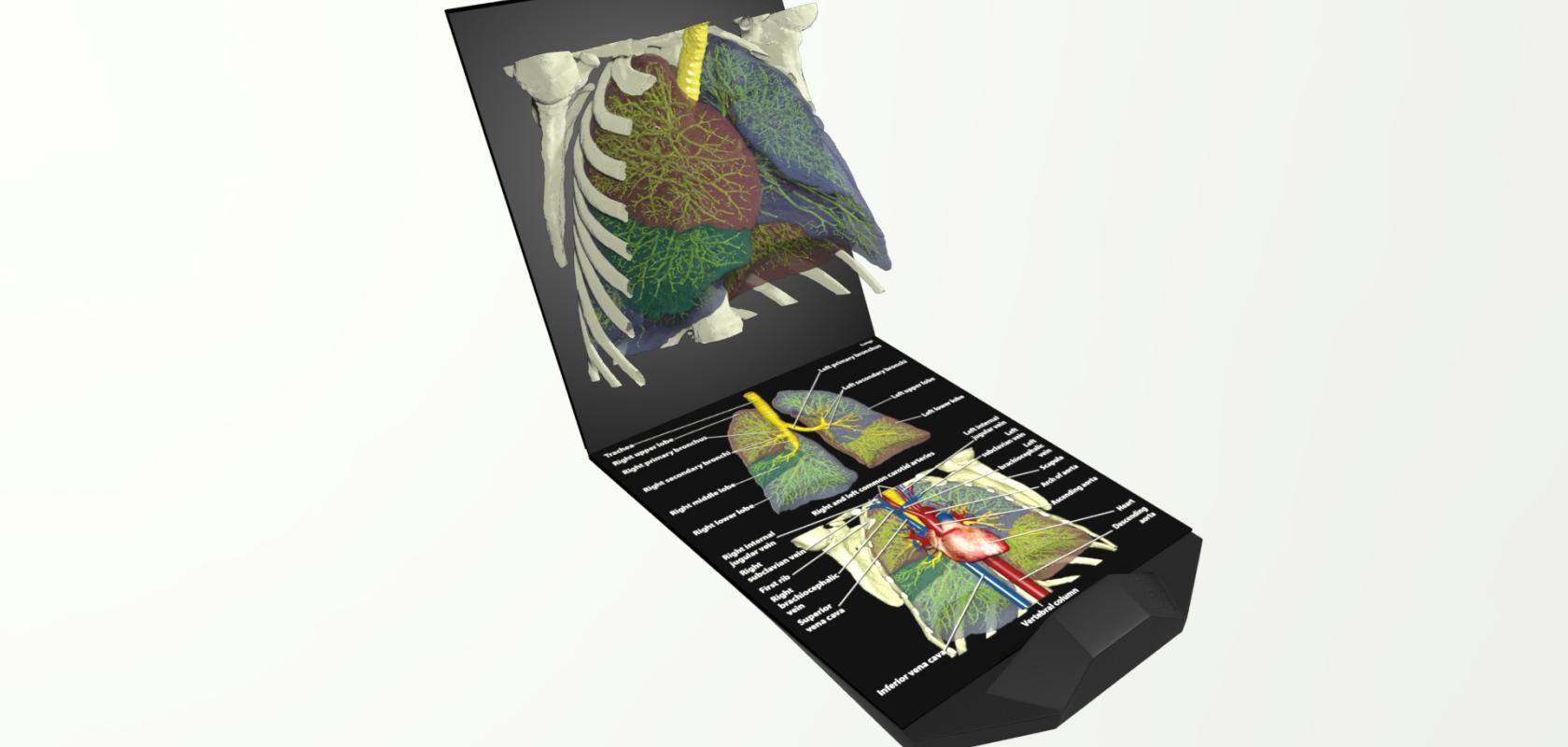A book of human anatomy made up of holographic 3D images that pop out of the page has been created in a joint collaboration between 3D visualisation company Holoxica and Professor Gordon Findlater at the University of Edinburgh. Findlater is Professor of translation anatomy at the University of Edinburgh’s school of biomedical sciences.
The holographic human anatomy Atlas gives a realistic depiction of deeper anatomical structures in the body. It is designed to provide teaching hospitals, medical schools, colleges and research centres with a detailed interpretation and perspective of intricate anatomical structures.
Atlas has physical pages that can be turned, and includes a light source to project the holographic images. The image data used to create the holograms has been sourced from CT, MRI, ultrasound scans and specially created 3D models to replicate a true three-dimensional understanding of the underlying anatomy.
Dr Javid Khan, CEO of Holoxica, explained the idea behind the book: ‘Medical students have often struggled with a deeper understanding of the relative positioning of complex anatomical structures, for example, the position of a vein in front of a nerve, which might be located behind a tendon.
‘This is the level of pinpoint accuracy and detailed precision which the 3D digital Atlas offers. And since human visual perception is inherently 3D, viewing this information this way aids a better understanding of the underlying anatomy, as well as helping recollection and recall.’
Digital holograms contain a vast amount of information – a square millimetre holds around 24 megabytes of data, which corresponds to all of the rays of light emitting from every direction to form a 3D image.
Holoxica hopes the 3D Atlas will be used by universities as a teaching aid for first and second year medical and anatomy students. The feedback from students and teachers has been positive so far, with one Professor of anatomy saying that this technology would have saved him months of study while he was an undergraduate.
Holoxica is teaming up with Scion Publishing, a medical publisher, and Zebra Imaging, a manufacturer of digital holograms, to transform the 3D Anatomy Atlas prototype into a commercial product.
Holoxica is also conducting research into a holographic 3D video display, which is being designed to view images in real-time as they are produced by medical scanners. This project has support from the EU Horizon2020 SME Instrument Programme.


